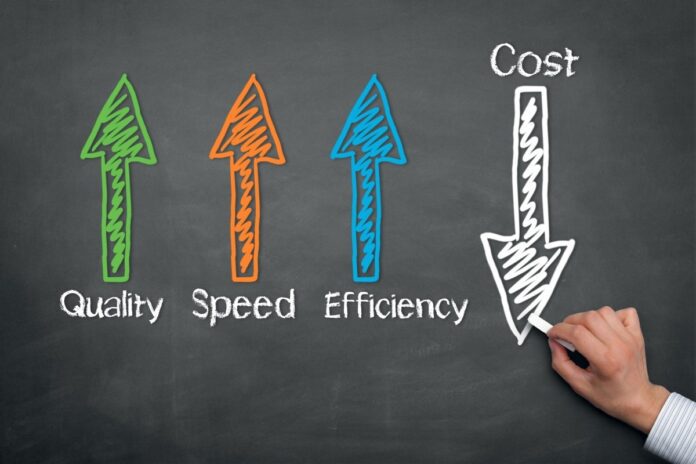In the realm of business, the pursuit of cost reduction is a perpetual goal. However, a myopic focus on cutting expenses can inadvertently lead to a compromise in the quality of products, adversely affecting sales and tarnishing a company’s reputation. Striking a delicate balance between frugality and product excellence is the key. In this article, we will explore strategic approaches that businesses can adopt to trim costs without sacrificing the integrity of their products.
1. Rethink Supplier Relationships
Changing suppliers is a pragmatic approach to cost reduction without compromising product quality. Businesses can explore alternative suppliers offering the same quality raw materials at more competitive rates. This shift can result in immediate savings without any detrimental impact on the final product.
2. Energy Expenditure Optimization
Careless energy consumption can be a silent cost inflator. Implementing energy-efficient measures, such as using energy-saving lights and solar panels, not only reduces costs but also aligns with sustainability goals. These measures, focused on energy conservation, have no bearing on product quality.
3. Bulk Purchases for Cost Efficiency
Purchasing raw materials in larger quantities proves to be a cost-effective strategy. It not only reduces the per-item cost but also minimizes shipping expenses. This approach is a financial win without altering the fundamental quality of the procured materials.
4. Process Efficiency for Waste Reduction
Careful planning of production processes can significantly impact cost reduction. Properly trained employees, coupled with efficient processes, minimize material wastage during production. This results in cost savings while maintaining consistent product quality.
5. Strategic Outsourcing
Outsourcing non-core tasks, such as website maintenance or advertising campaigns, can be a prudent move. Hiring freelancers for specialized jobs reduces the need for extensive employee training and overhead costs. The focus can then remain on core business aspects like product quality.
6. Streamlined Workforce
Evaluating and optimizing the workforce is critical. Unproductive employees contribute to unnecessary costs. Maintaining a smaller team of skilled and efficient employees can lead to substantial cost reductions without compromising productivity or product quality.
7. Rationalizing Incentives
Reviewing incentive structures ensures that rewards genuinely enhance productivity. Incentives that do not correlate with improved employee performance are extraneous costs. Streamlining incentive programs can yield savings without sacrificing product quality.
8. Innovative Marketing on a Budget
A shift in marketing strategies can attract customers without exorbitant costs. Engaging talented yet affordable freelancers for creative work and utilizing cost-effective marketing channels can achieve broader outreach without compromising quality.
9. Embrace Virtualization
Transitioning to virtual record-keeping minimizes paperwork costs. Cloud storage eliminates the need for physical storage space and reduces the requirement for manual data entry. This move towards virtualization is a cost-efficient solution with no impact on product quality.
10. Frugal Company Infrastructure
1. Budget-Friendly Stationery and Supplies
Opting for cost-effective stationery and office supplies is a fundamental step in building a frugal company infrastructure. Assessing the actual needs of the workforce and procuring only essential supplies prevents unnecessary expenditure. Bulk purchases at discounted rates can further contribute to cost savings.
2. Minimalist Furniture Selection
Furniture constitutes a significant part of a company’s infrastructure. Choosing minimalist and budget-friendly furniture options can substantially reduce expenses. Considerations such as ergonomic design and multifunctionality should not be compromised, ensuring that frugality does not compromise the comfort and efficiency of the workforce.
3. Economical Technological Investments
Investing in technology is inevitable for modern businesses, but the key lies in making economical choices. Opt for reliable yet affordable hardware and software solutions. Embrace open-source software where applicable, and consider leasing equipment instead of making substantial upfront purchases to manage cash flow effectively.
4. Energy-Efficient Systems
Frugality extends beyond the initial purchase to the operational costs. Selecting energy-efficient systems and appliances reduces ongoing expenses. LED lighting, energy-efficient HVAC (heating, ventilation, and air conditioning) systems, and smart thermostats are examples of choices that align with both frugality and sustainability.
5. Remote Work Infrastructure
The rise of remote work has redefined the concept of company infrastructure. Embracing remote work setups can significantly cut costs related to physical office spaces. Cloud-based collaboration tools and virtual communication platforms further reduce the need for extensive in-house infrastructure.
6. Shared Resources and Spaces
Collaborative and shared spaces contribute to frugality by maximizing the utility of resources. For instance, communal work areas, shared printers, and multifunctional meeting spaces optimize the usage of physical infrastructure. This approach encourages flexibility and minimizes underutilization of space and equipment.
7. Emphasis on Sustainability
A frugal company infrastructure aligns with sustainability practices. Implementing eco-friendly initiatives, such as recycling programs and energy-saving measures, not only contribute to cost reduction but also enhance the company’s reputation as a responsible corporate citizen.
8. Scalability for Growth
A frugal infrastructure is not just about immediate cost savings but also about scalability. Invest in solutions and systems that can seamlessly scale with the company’s growth. This prevents the need for frequent overhauls and allows for a more sustainable and cost-effective long-term strategy.
9. Employee Training and Tech Literacy
Ensuring that employees are well-trained and technologically literate contributes to the efficiency of the infrastructure. Competent and tech-savvy employees are less likely to encounter operational issues, minimizing the need for extensive support systems and additional expenses.
10. Regular Infrastructure Audits
Periodic assessments of the company’s infrastructure are crucial for identifying areas of improvement and potential cost-saving measures. Conducting regular audits allows businesses to adapt to evolving needs, ensuring that the infrastructure remains aligned with both functionality and frugality.
Conclusion: A Holistic Approach to Cost Management
In conclusion, the quest for cost reduction should not be synonymous with a compromise in product quality. Adopting a strategic and holistic approach allows businesses to identify areas of excess without undermining the essence of their offerings. By implementing these strategies, businesses can not only reduce costs but also pave the way for continuous improvement in product quality. The synergy of fiscal prudence and commitment to excellence ensures a sustainable and thriving business in the long run.









